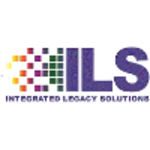Description

Cinchy

OmniView
Comprehensive Overview: Cinchy vs OmniView
Cinchy
a) Primary Functions and Target Markets:
Cinchy is a data collaboration platform designed to simplify and streamline how organizations manage and utilize data. It aims to eliminate data silos and enable a more collaborative approach to handling data across different applications.
-
Primary Functions:
- Data Collaboration: Cinchy creates a networked architecture that centralizes data, allowing multiple applications and users to access a single source of truth without the need for traditional data integration.
- Data Governance and Control: Offers robust features for data governance, ensuring compliance, security, and consistent data management.
- Data Automation: Automates data workflows, freeing up time for more strategic tasks and reducing manual data handling errors.
- Rapid App Development: Facilitates quick creation of applications by leveraging already existing data, improving efficiency in development processes.
-
Target Markets:
- Large enterprises, specifically in sectors like finance, healthcare, and government, where data integration and compliance are critical.
- Organizations with complex data ecosystems that require enhanced collaboration and real-time data access.
b) Market Share and User Base:
Cinchy's market share is growing as more organizations recognize the need to move away from traditional data integration methods. While specific market share figures might not be publicly available, Cinchy is making strides in sectors that demand high data governance and collaboration capabilities. Its user base primarily consists of large enterprises that benefit from the operational efficiency and data control it provides.
c) Key Differentiating Factors:
- Networked Data Architecture: Cinchy's unique data fabric model transforms how data is shared and accessed across an organization.
- No-Code Environment: Provides a no-code platform for developing data-driven applications, significantly decreasing time-to-market for new apps.
- Unified Data Management: Offers a single platform for managing data, promoting a centralized and simplified data landscape.
OmniView
a) Primary Functions and Target Markets:
OmniView is typically associated with customer relationship management (CRM) solutions or platforms that provide a unified view of customer interactions and data across multiple channels.
-
Primary Functions:
- Unified Customer Data: Combines data from various touchpoints to present a comprehensive view of customer interactions and history.
- Customer Insights and Analytics: Provides tools for analyzing customer behavior and preferences to enhance decision-making.
- Omnichannel Solutions: Manages interactions across different communication channels, ensuring a consistent customer experience.
- Personalization: Enables businesses to tailor their services and communications based on detailed customer profiles.
-
Target Markets:
- Mid-sized to large enterprises across industries like retail, telecommunications, and customer service-centric businesses.
- Companies looking to improve customer engagement and personalization through detailed customer insights.
b) Market Share and User Base:
OmniView, if considered within the context of CRM or similar platforms, competes with major players like Salesforce, Microsoft Dynamics, and others. Its market share would vary based on region and industry, often appealing to enterprises that prioritize multi-channel customer interaction management. The user base includes organizations requiring enhanced customer insight tools and those seeking to unify their customer engagement platforms.
c) Key Differentiating Factors:
- Holistic Customer View: Offers an integrated approach to understanding customer interactions across all channels and touchpoints.
- Advanced Analytics: Powerful analytics capabilities that allow for deeper insights into customer behavior and trends.
- Scalability and Integration: Easily scalable and integrable with other enterprise systems, supporting growth and technological evolution.
Comparing Cinchy and OmniView
Cinchy and OmniView are designed to address different challenges within organizations. Cinchy focuses on data collaboration and breaking down silos to improve data governance and application development. It is ideal for enterprises struggling with data integration and management across disparate systems. OmniView, on the other hand, targets customer experience enhancement through a unified view of customer interactions, appealing to businesses focused on CRM and customer insights.
In summary, while both platforms aim at optimizing operations and providing comprehensive solutions, Cinchy’s strength lies in data collaboration and application development, while OmniView excels in customer relationship management and omnichannel engagement.
Contact Info

Year founded :
2017
+1 844-424-6249
Not Available
Canada
http://www.linkedin.com/company/cinchy

Year founded :
2019
Not Available
Not Available
South Africa
Not Available
Feature Similarity Breakdown: Cinchy, OmniView
As of my last update, Cinchy and OmniView are platforms that offer data management and integration capabilities. Here’s a breakdown of their feature similarities and differences based on typical offerings for such platforms:
a) Core Features in Common
-
Data Integration:
- Both Cinchy and OmniView provide solutions that allow for integrating data from various sources. This feature is essential for businesses looking to consolidate information from multiple databases or software applications.
-
Data Collaboration:
- Each platform facilitates collaboration, allowing multiple users to work on data and projects simultaneously. This includes features like data sharing and version control.
-
User Management:
- Both include user management and access control features to ensure that only authorized personnel can view or edit data, which is critical for data security and privacy.
-
Real-time Data Processing:
- Real-time or near-real-time data processing capabilities enable users to access up-to-date information for decision-making processes.
-
Dashboard and Analytics:
- Each provides tools for creating dashboards and performing analytics. These features help in visualizing data and extracting actionable insights.
b) User Interface Comparison
-
Cinchy:
- Cinchy typically offers a no-code and user-friendly interface that emphasizes collaborative workspace features. It's designed to be accessible to non-technical users while still offering depth for complex data tasks.
-
OmniView:
- OmniView may offer a more traditional interface with a focus on integration and management of complex datasets. Its UI might lean towards more technically inclined users, offering more customization on the back end.
c) Unique Features
-
Cinchy:
-
Dataware Technology:
- Cinchy markets itself as the pioneer of Dataware technology, aiming to eliminate data silos by allowing applications to connect directly to a single source of data, which could potentially reduce redundancy and enhance collaboration.
-
Universal Control:
- This feature includes a robust governance layer that allows for comprehensive data access control across all connected data sources.
-
-
OmniView:
-
Advanced Reporting Tools:
- OmniView might offer more advanced, specialized reporting tools that cater to specific industries or complex reporting needs, potentially surpassing Cinchy in depth for analytics on integrated data.
-
Vertical Integrations:
- OmniView may provide more pre-built integrations specifically tailored for certain industries (e.g., healthcare or finance) that streamline operations by using tailored data solutions.
-
This breakdown focuses on typical features and strategies from platforms providing data integration and management solutions. For precise and updated feature lists, consulting the latest documentation or customer reviews directly from these companies would be necessary.
Features

Enhanced Security and Compliance
Simplified Integration
Collaborative Data Management
Seamless Integration
Enhanced Data Security
Improved Efficiency
Unified Data Management

Project Management
Data Analytics
User Management
Best Fit Use Cases: Cinchy, OmniView
a) Cinchy
Cinchy is a data collaboration platform designed to help businesses manage and integrate their data without the need for traditional data integration processes. It uses a data fabric approach to provide a collaborative data environment. Here are some use cases for Cinchy:
-
Data-Intensive Enterprises: Companies that handle vast amounts of data across various departments. Cinchy is great for enterprises looking to simplify and enhance their data management, breaking down silos and creating a more unified and accessible data environment.
-
Centralized Data Governance: Organizations that require strict data governance and security protocols. Cinchy’s architecture allows for real-time control over who can access or modify data, which is essential for regulated industries like finance or healthcare.
-
Agile Software Development: Projects that require rapid iteration and development cycles. Cinchy allows for faster application development without the need for extensive data integration processes, making it ideal for dynamic development environments.
-
Digital Transformation Initiatives: Businesses undergoing digital transformation that need to modernize their data infrastructure can leverage Cinchy’s data fabric to create a more agile and efficient system.
-
Cross-Departmental Collaboration: Organizations aiming to enhance collaboration across various departments. Cinchy provides a single platform for all data stakeholders, improving communication and collaboration.
b) OmniView
OmniView is typically a tool geared towards providing businesses with a comprehensive view of customer data or other critical enterprise data dimensions. It focuses on data visualization and insights. Here are some scenarios where OmniView would be preferred:
-
Customer Relationship Management (CRM) Enhancement: Companies looking to improve their CRM systems by having a unified view of customer interactions, preferences, and history. OmniView excels at aggregating data from multiple sources to provide a holistic customer view.
-
Retail and E-commerce Analytics: Businesses in the retail sector looking to analyze customer behavior and purchasing patterns. OmniView can aggregate sales, browsing, and interaction data to provide actionable insights for marketing and sales strategies.
-
Data Visualization Needs: Organizations that need robust data visualization capabilities for reporting and business intelligence. OmniView is suited for environments where presenting data in a clear and actionable format is critical.
-
Multi-Source Data Aggregation: Companies that need to bring together data from various sources into a single view for strategic decision-making. This could be particularly useful for enterprises with complex supply chains or extensive partner networks.
-
Large-Scale Enterprises: Large companies that manage vast amounts of customer or operational data across different systems and need to consolidate this data for strategic insights.
d) Catering to Different Industry Verticals or Company Sizes
Cinchy:
-
Industry Verticals: Cinchy is particularly suitable for industries like finance, healthcare, and government, where data security and compliance are paramount. Its ability to offer real-time data control makes it ideal for these sectors.
-
Company Sizes: While Cinchy can benefit companies of all sizes, its advantages are most pronounced in medium to large enterprises that deal with complex data environments and need to enhance collaboration across departments.
OmniView:
-
Industry Verticals: OmniView has broad applicability across many verticals but is especially beneficial for retail, e-commerce, and any industry where customer insights and data visualization are critical.
-
Company Sizes: OmniView is suitable for businesses at any scale, but its features shine in medium to large enterprises, where data from multiple sources needs to be understood and leveraged for business strategy.
Both Cinchy and OmniView serve different purposes with some overlap in facilitating better data handling. The choice between them would largely depend on the specific data challenges and goals of a business or project.
Pricing

Pricing Not Available

Pricing Not Available
Metrics History
Metrics History
Comparing teamSize across companies
Conclusion & Final Verdict: Cinchy vs OmniView
To provide a well-rounded conclusion and final verdict for Cinchy and OmniView, we'll evaluate both products in terms of their value, pros and cons, and offer recommendations for potential users.
a) Best Overall Value
Cinchy: Cinchy is known for its innovative data collaboration platform, which facilitates data management and eliminates data silos. Its Data Fabric technology allows for easy and secure data sharing across applications without duplicating data. This can result in cost savings and increased efficiency for businesses with complex data needs.
OmniView: OmniView typically offers robust tools for data analysis, reporting, and visualization. It is a favored choice for businesses needing powerful BI (Business Intelligence) tools to gain insights and drive informed decision-making.
Best Overall Value: The best overall value between Cinchy and OmniView largely depends on the specific needs of an organization. For companies prioritizing data collaboration and reducing redundancy, Cinchy may offer more substantial value. In contrast, those focusing on in-depth data analysis and visualization might find OmniView to be more valuable.
b) Pros and Cons
Cinchy:
-
Pros:
- Eliminates data silos, reducing redundancy and improving data accuracy.
- Facilitates easy data collaboration across applications.
- May result in cost savings by streamlining data management processes.
-
Cons:
- May require a learning curve for organizations not familiar with the Data Fabric approach.
- Potential challenges with integrating legacy systems at scale.
OmniView:
-
Pros:
- Offers powerful BI tools for comprehensive data analysis and visualization.
- Well-suited for organizations focused on deep data insights and reporting.
-
Cons:
- Might require additional investments into training and tool configuration.
- Could involve higher costs for licensing and infrastructure, especially for large-scale implementations.
c) Recommendations
For Potential Users:
-
If you're an organization that values efficient data collaboration and aims to break down silos for seamless data sharing, Cinchy could be your best choice. Its data-centric approach is advantageous for organizations that manage vast amounts of data and need an integrated system.
-
If your priority is advanced data analytics and visualization for informed decision-making, OmniView might be the better fit. It caters well to businesses where deep insights from data drive strategic goals.
Specific Recommendations:
-
Evaluate Your Current Infrastructure: Organizations should assess their existing data management systems to determine compatibility and the potential integration challenges with either Cinchy or OmniView.
-
Consider Staff Expertise: The skillset of your current IT and data teams is crucial. If they are adept at handling BI tools, OmniView may offer a smoother transition. Conversely, if your team is oriented towards innovative data management solutions, Cinchy might be easier to adopt.
-
Pilot Programs: Both tools offer unique capabilities. Running a pilot program can help identify which solution truly addresses your organization's needs more effectively before making a significant commitment.
In conclusion, the choice between Cinchy and OmniView comes down to the specific requirements of your organization regarding data collaboration versus data analysis. Carefully weigh the pros and cons and consider the strategic goals of your business to make the best decision.
Add to compare
Add similar companies




